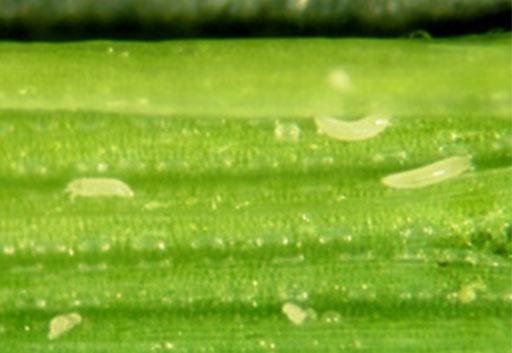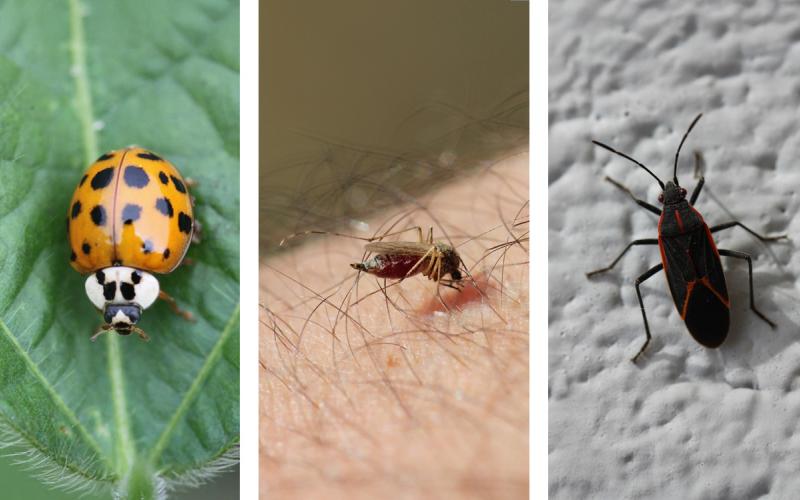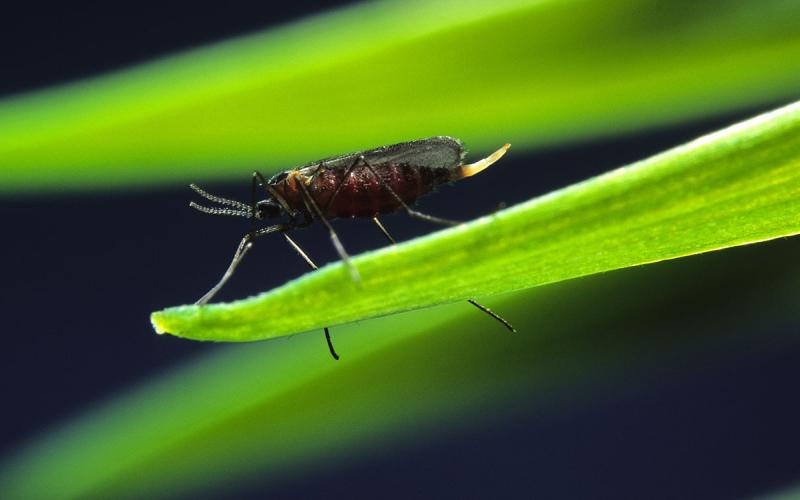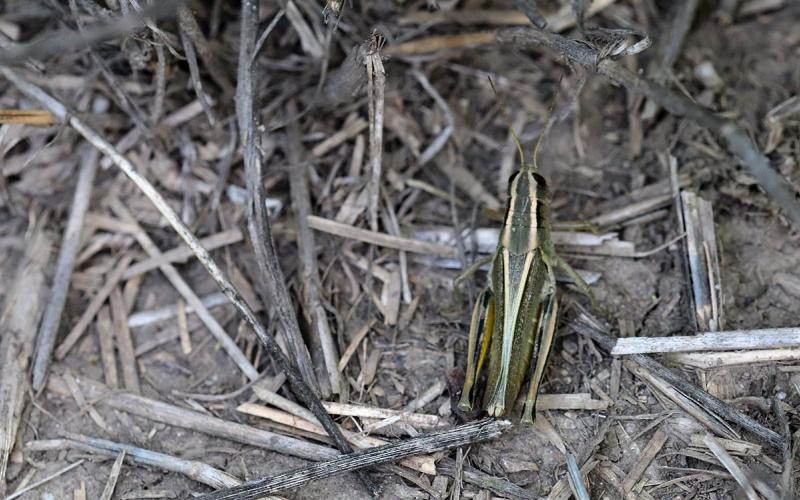Winter wheat planting is underway in South Dakota. After wheat emergence, it is important to scout for brown wheat mite and wheat curl mite populations. These mites are capable of reducing wheat yields through direct feeding, and wheat curl mite is also a vector of Wheat streak mosaic virus. Although scouting can be used to successfully manage brown wheat mite populations, wheat curl mites are best managed through pre-planting preventative measures.
Identification

Brown Wheat Mite
Brown wheat mite (Figure 1) is very small and dark red to brown in color. It has eight light yellow to orange legs, and the front pair is nearly twice as long as the other three pairs. Identification of this pest may require a hand lens due to its small size. Brown wheat mites cause stippling (light colored spots) when they feed on developing leaves. This injury may cause the leaves to turn white or brown, and is similar in appearance to drought symptoms.

Wheat Curl Mite
Wheat curl mite (Figure 2) is very small and white in color. It can be identified by its elongated body which is approximately 1/100th of an inch long. Identification of this pest will require a hand lens due to its small size.
Scouting
To scout for mites in wheat, start at one side of a field near the field border. Walk in a “W” or “Z” pattern and randomly choose five plants on each path to examine. Mite pests are commonly observed on the leaves. Once the scouting is complete calculate the average number of brown wheat mites that were observed per stem. See Table 1 for the economic thresholds for the brown wheat mite.
| Pest |
|
|
|---|---|---|
| Seedling stage | Boot to heading | |
| Brown wheat mite | 25-50 | 25-50 |
Management
If a pest population is above the economic threshold, management should be considered. Prior to insecticide application, check the weather forecast. Warm fall conditions may encourage continued pest pressure. See Table 2 for insecticides that are labeled for brown wheat mite.
For the wheat curl mite, management recommendations are focused on pre-planting prevention, which includes the removal or destruction of alternate host plants from the field prior to planting. If these alternate hosts are present as the new wheat emerges, the mites will use them as a green-bridge to infest the new crop.
| Insecticide (Active Ingredient) |
Restricted Entry Interval (hours) |
| Besiege (lambda-cyhalothrin and chlorantraniliprole) |
24 |
| Cobalt Advanced (chlorpyrifos and lambda-cyhalothrin) |
24 |
| Dimate 4E (Dimethoate) |
48 |
| Karate with Zeon Technology (lambda-cyhalothrin) |
24 |
| Lorsban Advanced (chlorpyrifos) |
24 |
| Mustang Maxx2 (zeta-cypermethrin) |
12 |
| Nufos 4E (chlorpyrifos) |
24 |
| Proaxis (gamma-cyhalothrin) |
24 |
| Silencer (lambda-cyhalothrin) |
24 |
| Stallion (zeta-cypermethrin and chlorpyrifos) |
24 |
| Warrior II with Zeon Technology (lambda-cyhalotrhin) |
24 |
| *This list is not meant to be comprehensive. Always read and follow label instructions. | |
References:
- Blodgett, S., and J. Kieckhefer. 2012. Insect pests of wheat. In Clay, D. E., C. G. Carlson, and K. Dalsted (eds). iGrow Wheat: Best Management Practices for Wheat Production. South Dakota State University, SDSU Extension, Brookings, SD.
- Royer, T. 2009. Brown wheat mite showing up in winter wheat. Pest E-alerts Vol. 8, No. 3. Oklahoma State University Extension.


